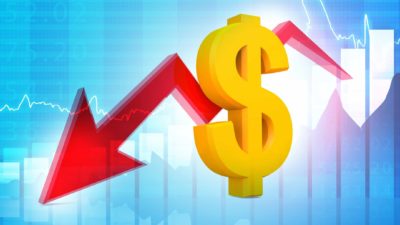According to the Australian Bureau of Statistics (ABS), last quarter brought the first decrease to the Australian population since WWI, with 4,200 less people now calling Australia home. If this trend continues – and there is reason to believe it will – it could affect those investing in ASX listed companies.
Let's look deeper into why a declining population might affect the ASX.
The important figures
In 2019, we shared our country with 383,000 new Australians. Of which, only 143,000 were babies born here. In fact, the Australian birthrate has been declining for years — it's no longer able to sustain our population.
Thus, when the coronavirus pandemic hit (and borders closed), our population's growth dropped.
KPMG's report Pathways to recovery: International students will boost our living standards estimates that our population will still be missing 420,000 people from the estimated 2030 population, due to COVID-19.
Further, according to the Parliamentary Budget Office's report Australia's Aging Population, 2030 is the final working year for the youngest baby boomers.
What does population have to do with GDP?
The less people that live in Australia, the less money there is in our economy.
KPMG's report estimates the predicted decrease in population will result in a hit to GDP. It figures the pandemic will result in GDP decreasing by approximately $45 billion in 2030, and every year after.
It also estimates that average household incomes in 2030 will be approximately $31,000 less than previously predicted.
The report notes that Australia has what's called 'brain drain'. That is, many of our most productive citizens migrate overseas. We combat this by allowing skilled workers to migrate to Australia. Typically, there are more migrating workers than immigrating workers, and those that arrive in Australia are more productive.
But due to COVID-19 border closures, it's likely Australia won't receive as many skilled workers as we lose over the coming years.
That means that Australia could potentially have a future shortage of workers, meaning less tax is paid.
This is where it gets complicated.
Less Australians earning wages, while more Australians are reliant on the age pension and Medicare, could mean that taxes have to be increased. An increase in taxes can be detrimental to GDP.
What might the declining Australian population mean for the ASX?
Australia's average age is currently 37.2 years but, according to the ASX Australian Investor Study 2020, the average age of an Australian investor is 46. In fact, only 10% of Australian investors are under 24.
If the population of Australian investors begins to cash out their portfolios for retirement over the coming decades, while most Australians struggle financially, who might we see investing in the ASX?
Perhaps, if all these predictions come true, the ASX could fall on tough times in the medium-term future. As many Australians might.
Unfortunately, we have to leave you with that worrying question about the future. As there are no relevant examples of post-pandemic share market trends, we will all wait patiently to see what the next few decades bring for Australia and the ASX.








